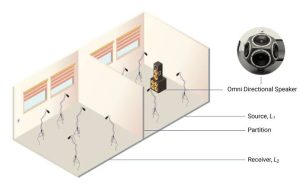
In the competitive landscape of modern business, the productivity and effectiveness of a workforce can significantly dictate the success of an organization. Unlocking the full potential of employees is not just about pushing for more output but nurturing an environment that fosters sustainable high performance. This article delves into strategic approaches to enhance workforce efficiency and extract the best work from employees consistently.
Cultivating a Productive Work Environment
Empowering Leadership:
Leadership plays a pivotal role in motivating employees to perform their best. Leaders who empower their teams, rather than micromanage, tend to foster a more proactive, responsible, and ultimately productive workforce. Empowerment can be facilitated through trust-building, delegation of authority, and providing the resources necessary for employees to autonomously navigate their roles.
Optimizing Workplace Conditions:
The physical and psychological conditions of the workplace have a profound impact on employee productivity. Ergonomically designed workspaces that consider comfort, lighting, noise control, and aesthetics can significantly boost productivity. Similarly, a positive atmosphere that promotes mental well-being is critical. This includes managing workplace stress and cultivating a culture of respect and support.
Technological Enablement:
In an era where technology pervades all aspects of business, providing employees with the right tools and training can dramatically enhance their efficiency. This ranges from simple solutions like dual monitors to more complex systems like integrated workflow management software. The key is to continuously evaluate technological needs and ensure the workforce is equipped to perform optimally.
Leveraging Employee Potential
The concept of employee potential refers to the latent abilities and capacity for growth within your workforce. Realizing this potential fully is a multi-faceted process:
Identifying Strengths and Weaknesses:
Effective management involves understanding the unique strengths and weaknesses of each team member. Utilizing performance assessments, peer reviews, and one-on-one meetings can help managers tailor developmental programs that address individual needs and tap into dormant potential.
Training and Development:
Investing in continuous education and professional development not only keeps your team up-to-date with industry standards but also signals a commitment to their personal growth. Training programs should be both skill-based and soft-skill-oriented, preparing employees for a variety of challenges while enhancing their career trajectory within the company.
Career Pathing:
Employees are more motivated when they see a clear path to advancement. Transparent career pathing combined with mentorship programs can encourage employees to push their boundaries and embrace greater responsibilities.
Fostering Motivation and Engagement
Recognition and Rewards:
A well-structured recognition and reward system can significantly enhance employee motivation and output. Whether through financial incentives, promotions, or public acknowledgment, recognizing employees’ efforts strengthens their engagement and encourages a culture of excellence.
Building a Collaborative Team Environment:
Promoting teamwork can lead to higher productivity and better quality of work. Encouraging collaboration through team-building activities, collaborative projects, and open communication channels can foster a sense of community and shared purpose.
Aligning Goals with Organizational Objectives:
Employees deliver their best work when they understand how their efforts fit within the larger picture. Communicating company goals, and how individual roles contribute to these objectives, can align efforts and enhance productivity.
Managing Challenges and Adapting to Change
Encouraging Innovation and Flexibility:
Businesses that stay rigid in their operations and management styles can stifle creativity and adaptability. Encouraging employees to innovate and approach problems flexibly can lead to improvements in processes and products, ultimately benefiting the business.
Handling Underperformance:
Addressing underperformance is crucial for maintaining overall workforce productivity. This should be approached constructively, with managers working alongside employees to understand the root causes and find feasible solutions.
Promoting Work-Life Balance:
While dedication to work is important, employees must also have time to recharge and avoid burnout. Policies that promote work-life balance, such as flexible working hours, remote work options, and adequate vacation time, can enhance overall productivity by maintaining physical and mental health.
Conclusion
Extracting the best work from employees is less about exerting control and more about empowering, equipping, and inspiring them to achieve their fullest potential. By fostering a supportive and productive work environment, continuously investing in employee development, and aligning individual aspirations with organizational goals, companies can not only enhance their operational efficiency but also build a committed and satisfied workforce. These strategies not only optimize output but also contribute to a sustainable organizational culture that can weather both internal and external challenges effectively. Through thoughtful leadership and strategic human resource management, businesses can unlock a level of performance that propels them to new heights in their respective industries.





